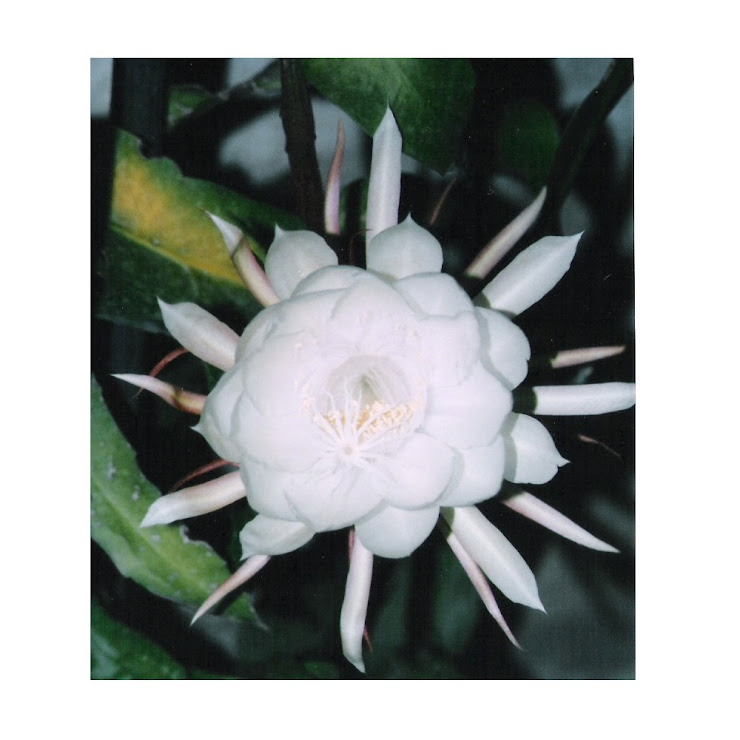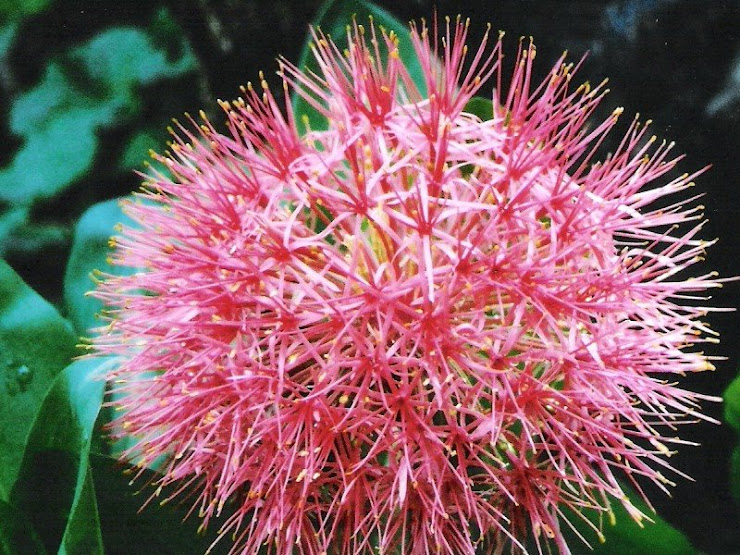The Secret of
Growing Landscape Plants from Cuttings
The secret of
growing landscape plants from cuttings can be summed up in two words. “Timing
and technique”. When you do your cuttings is every bit as important as how you
do them. So if you do the right thing, at the right time of the year, your
efforts are sure to bring success. Through this article you will learn both.
Hardwood Cuttings of Deciduous Plants
Hardwood
cuttings are much more durable than softwood cuttings which is why hardwoods
are the best technique for the home gardener.
A deciduous
plant is a plant that loses it’s leaves during the winter. All plants go
dormant during the winter, but evergreens keep their foliage. Many people don’t
consider Rhododendrons, Azaleas, and and Mountain Laurel evergreens, but they
are. They are known as broad leaf evergreens. Any plant that completely loses
it’s leaves is a deciduous plant.
There are two
different ways to do hardwood cuttings of deciduous plants. Is one better than
the other? It depends on exactly what you are rooting, what the soil conditions
are at your house, and what Mother Nature has up her sleeve for the coming
winter. I have experienced both success and failure using each method. Only
experimentation will determine what works best for you. Try some cuttings using
each method.
When doing
hardwood cuttings of deciduous plants, you should wait until the parent plants
are completely dormant. This does not happen until you’ve experienced a good
hard freeze where the temperature dips down below 5 degrees C. for a period of
several hours. Here Dehra Dun this usually occurs around mid December.
Method Number
One
Unlike softwood
cuttings of deciduous plants, where you only take tip cuttings from the ends of
the branches, that rule does not apply to hardwood cuttings of deciduous
plants.
For instance, a
plant such as Forsythia can grow as much as four feet in one season. In that
case, you can use all of the current years growth to make hardwood cuttings.
You might be able to get six or eight cuttings from one branch.
Grapes are
extremely vigorous. A grape vine can grow up to ten feet or more in one season.
That entire vine can be used for hardwood cuttings. Of course with grape vines,
there is considerable space between the buds, so the cuttings have to be much
longer than most other deciduous plants. The average length of a hardwood grape
vine cutting is about 12” and still only has 3 or 4 buds. The bud spacing on
most other deciduous plants is much closer, so the cuttings only need to be
about 6-8” in length.
Making a
deciduous hardwood cutting is quite easy. Just collect some branches (known as
canes) from the parent plants. Clip these canes into cuttings about 6” long. Of
course these canes will not have any leaves on them because the plant is
dormant, but if you examine the canes closely you will see little bumps along
the cane. These bumps are bud unions. They are next year’s leaf buds or nodes,
as they are often called.
When making a
hardwood cutting of a deciduous plant it is best to make the cut at the bottom,
or the butt end of the cutting just below a node, and make the cut at the top
of the cutting about 3/4” above a node.
This technique
serves two purposes. One, it makes it easier for you to distinguish the top of
the cutting from the bottom of the cutting as you handle them. It also aids the
cutting in two different ways.
Any time you
cut a plant above a node, the section of stem left above that node will die
back to the top node. So if you were to leave 1/2” of stem below the bottom
node, it would just die back anyway. Having that section of dead wood
underground is not a good idea. It is only a place for insects and disease to
hide.
It is also
helpful to actually injure a plant slightly when trying to force it to develop
roots. When a plant is injured, it develops a callous over the wound as
protection. This callous build up is necessary before roots will develop.
Cutting just below a node on the bottom of a cutting causes the plant to
develop callous and eventually, roots.
Making the cut
on the top of the cutting 3/4” above the node is done so that the 3/4” section
of stem above the node will provide protection for the top node. This keeps the
buds from being damaged or knocked off during handling and planting. You can
press down on the cutting without harming the buds. Although not necessary, it
helps to make the cut at the top of the cutting at an angle. This sheds water
away from the cut end of the cutting and helps to reduce the chance of disease.
Once you have
all of your cuttings made, dip them in a rooting compound. Make sure you have
the right strength rooting compound (available at most garden stores) for
hardwood cuttings.
Line them up so
the butt ends are even and tie them into bundles. Select a spot in your garden
that is in full sun. Dig a hole about 12” deep and large enough to hold all of
the bundles of cuttings. Place the bundles of cuttings in the hole upside down.
The butt ends of the cuttings should be up. The butt ends of the cuttings
should be about 6” below the surface. Cover the cuttings completely with soil
and mark the location with a stake, so you can find them again in the spring.
It is beneficial to cover the butt ends with moist peat moss before filling in
the hole.
Over the winter
the cuttings will develop callous and possibly some roots. Placing them in the
hole upside down puts the butt ends closest to the surface, so they can be
warmed by the sun, creating favorable conditions for root development. Being
upside down also discourages top growth.
Leave them
alone until about mid spring after the danger of frost has passed. Over the
winter the buds will begin to develop and will be quite tender when you dig
them up. Frost could do considerable damage if you dig them and plant them out
too early. That’s why it is best to leave them buried until the danger of frost
has passed.
Dig them up
very carefully, so as not to damage them. Cut open the bundles and examine the
butt ends. Hopefully, you will see some callous build up. Even if there is no
callous, plant them out anyway.
You don’t need
a bed of sand or anything special when you plant the cuttings out. Just put
them in a sunny location in your garden. Of course the area you chose should be
well drained, with good rich topsoil.
To plant the
cuttings, just dig a very narrow trench, or using a spade, make a slice by
prying open the ground. Place the cuttings in the trench with the butt ends
down. Bury about one half of the cutting leaving a few buds above ground. Back
fill around the cuttings with loose soil making sure there are no air pockets.
Tamp them in lightly. Water them on a regular basis, but don’t make the soil so
wet that they rot.
Within a few weeks the cuttings will start to leaf out. Some will more than likely collapse because there are not enough roots to support the plant. The others will develop roots as they leaf out. By fall, the cuttings that survived should be pretty well rooted. You can transplant them once they are dormant, or you can wait until spring. If you wait until spring, make sure you transplant them before they break dormancy.
Within a few weeks the cuttings will start to leaf out. Some will more than likely collapse because there are not enough roots to support the plant. The others will develop roots as they leaf out. By fall, the cuttings that survived should be pretty well rooted. You can transplant them once they are dormant, or you can wait until spring. If you wait until spring, make sure you transplant them before they break dormancy.
Method Number Two
When using the
second method for rooting hardwood cuttings of deciduous plants you do
everything exactly the same as you do with method number one, up to the point
where you bury them for the winter.
With method
number two you don’t bury them at all. Instead, you plant the cuttings out as
soon as you make them in the late fall, or anytime during the winter when the
ground is not frozen. In other words, you just completely skip the step where
you bury the cuttings underground for the winter.
Plant them
exactly the same way as described for method number one. As with all cuttings,
treating them with a rooting compound prior to planting will help induce root
growth.
Hardwood
cuttings work fairly well for most of the deciduous shrubs. However, they are
not likely to work for some of the more refined varieties of deciduous
ornamentals like Weeping Cherries or other ornamental trees.
Hardwood
Cuttings of Evergreens
Hardwood
cuttings of evergreens are usually done after you have experienced two heavy
frosts in the late fall, around mid November or so. However, I have obtained
good results with some plants doing them as early as mid September, taking
advantage of the warmth of the fall sun. When doing them is early, they need to
be watered everyday. Try some cuttings early and if they do poorly, just do
some more in November.
Hardwood
cuttings of many evergreens can be done at home in a simple frame filled with
course sand. To make such a frame, just make a square or rectangular frame
using 2” by 6” boards. Nail the four corners together as if to make a large
picture frame. This frame should sit on top of the ground in an area that is
well drained. An area of partial shade is preferred.
Once you have
the frame constructed remove any weeds or grass inside the frame so this
vegetation does not grow up through your propagation bed. Fill this frame with
a very coarse grade of sand. This frame must be well drained, and coarse sand
drains very well. Fine sands do not drain well at all. Standing water is sure
to seriously hamper your results.
Making the
evergreen cuttings is easy. Just clip a cutting 4-5 inches in length from the
parent plant. Make tip cuttings only. (Only one cutting from each branch.)
Strip the needles or leaves from the bottom one half to two thirds of the
cutting. Wounding evergreen cuttings isn’t usually necessary because removing
the leaves or needles causes enough injury for callous build up and root
development.
Dip the butt
ends of the cuttings in a powder or liquid rooting compound and stick them in
the sand about 3/4” to 1” apart. Keep them watered throughout the fall until
cool temperatures set in. Start watering again in the spring and throughout the
summer. They don’t need a lot of water, but be careful not to let them dry out,
and at the same time making sure they are not soaking wet.
Hardwood
cuttings of many evergreens will root this way, but it does take some time. You
should leave them in the frame for a period of twelve months. You can leave
them longer if you like. Leaving them until the following spring would be just
fine. They should develop more roots over the winter.
This method of
rooting hardwood cuttings can and will work well for variegated Euonymus
varieties, Taxus, Juniper, Arborvitae, Japanese Holly, Boxwood, and English
Holly. Rhododendrons and Azaleas prefer to have their bottoms warmed before
they root.











No comments:
Post a Comment